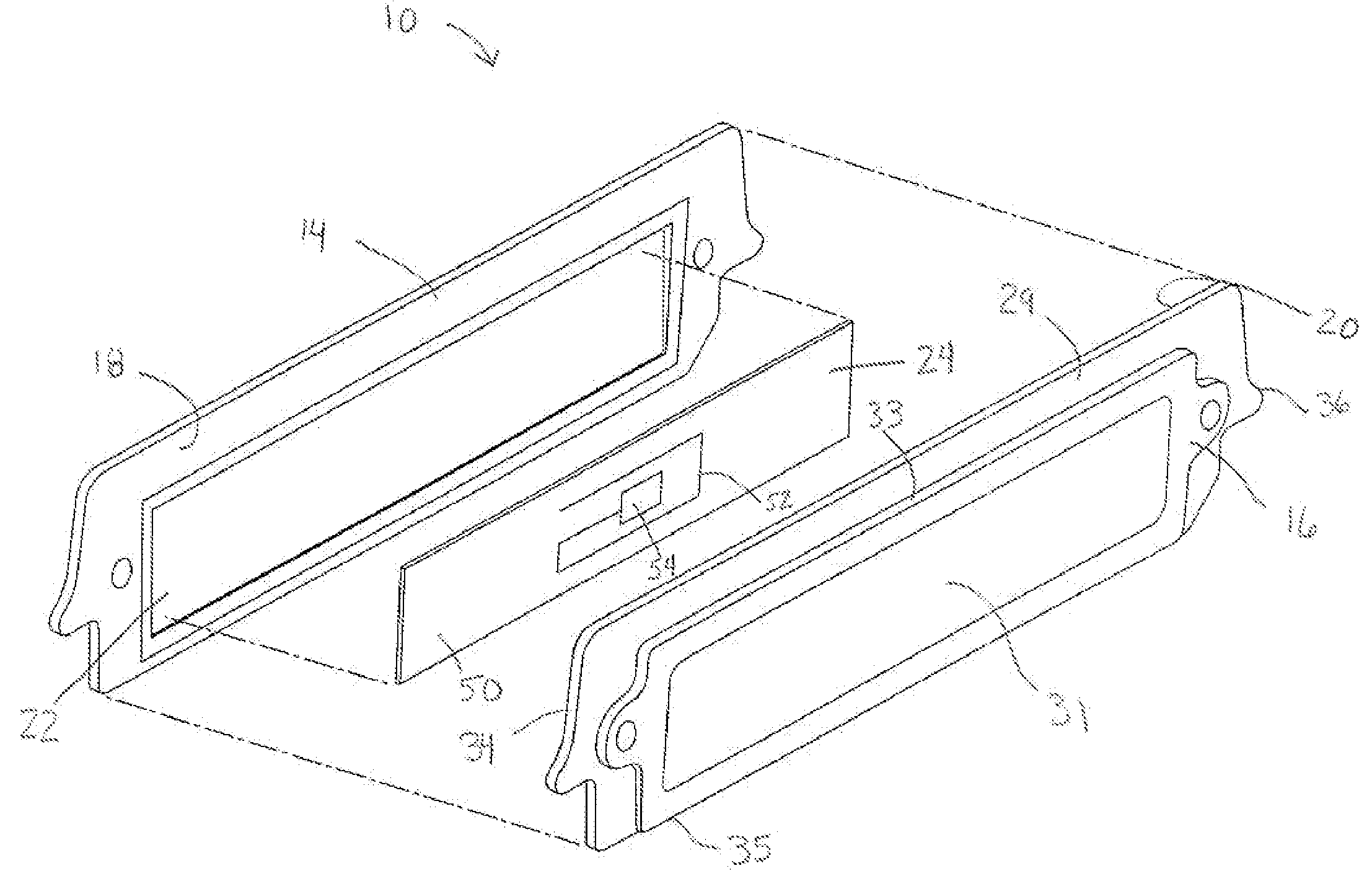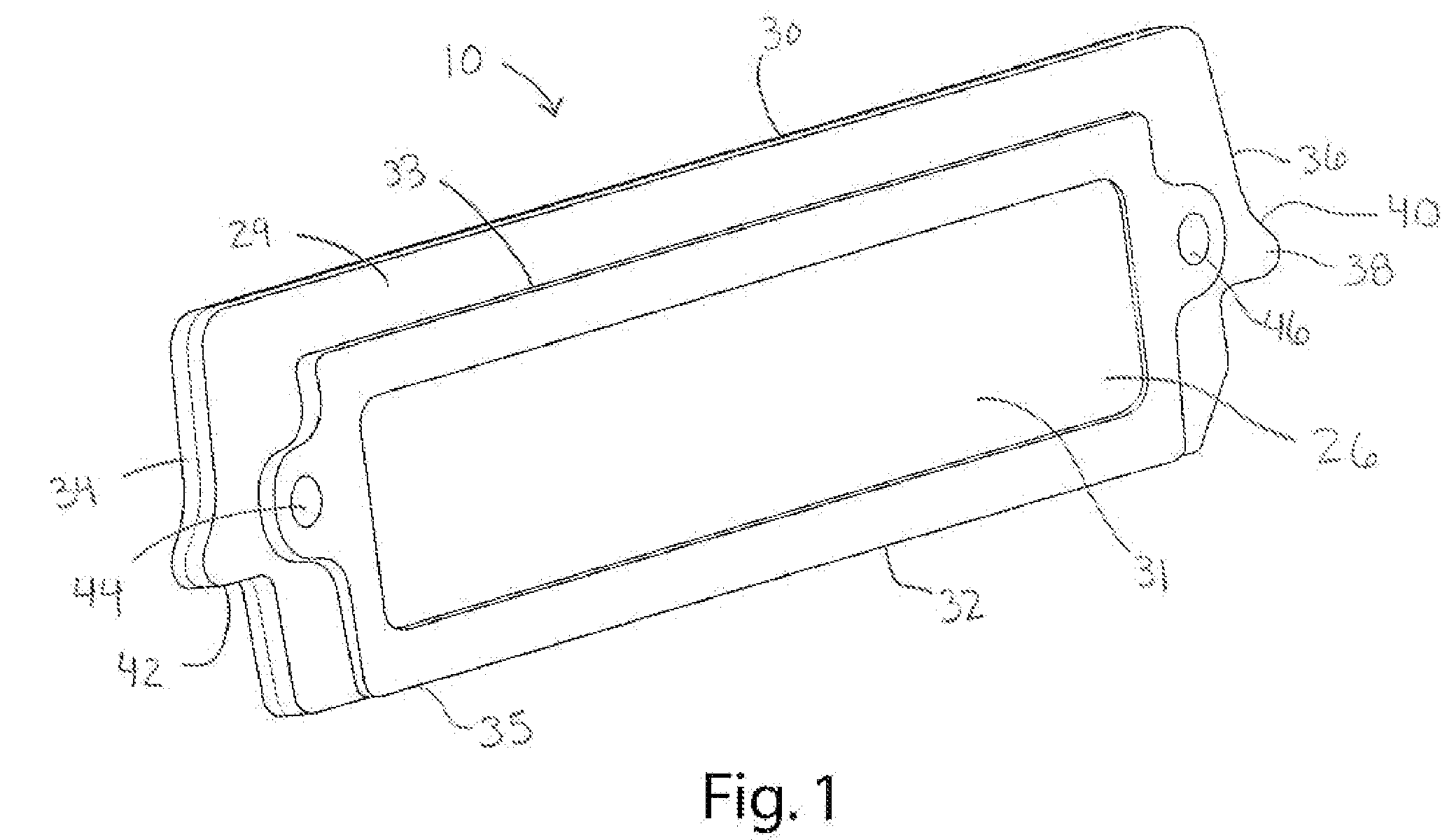RFID hard case device and method of manufacture
a hard case and hard case technology, applied in the field of waste and recycling containers, can solve the problems of inoperable devices, container becomes unusable, and unsuccessful attempts to implement these approaches, and achieve the effect of reducing potential harm
- Summary
- Abstract
- Description
- Claims
- Application Information
AI Technical Summary
Benefits of technology
Problems solved by technology
Method used
Image
Examples
Embodiment Construction
[0017]I. Overview
[0018]An RFID hard case according to one embodiment of the present invention is shown in FIG. 1 and generally designated 10. In one embodiment, shown in FIG. 5, the RFID hard case 10 is designed to be molded into a plastic item, such as a waste / recycling container 12. In one embodiment, the RFID hard case 10 is also designed to snap-fit into a portion of the waste / recycling container 12. For purposes of illustration, the invention will be described in connection with a waste / recycling container. It should be appreciated, however, that the construction and method described herein could be applied to attach an RFID device to a wide variety of plastic items.
[0019]II. Structure
[0020]The case 10 is typically injection molded plastic, but may be formed from a variety of materials. In one embodiment, the case 10 includes a first half 14 and a second half 16. The halves 14 and 16 are generally identical and include interior surfaces 18, 20 respectively that each define a ca...
PUM
| Property | Measurement | Unit |
|---|---|---|
| wedge shape | aaaaa | aaaaa |
| molding | aaaaa | aaaaa |
| frequency | aaaaa | aaaaa |
Abstract
Description
Claims
Application Information
 Login to View More
Login to View More - R&D
- Intellectual Property
- Life Sciences
- Materials
- Tech Scout
- Unparalleled Data Quality
- Higher Quality Content
- 60% Fewer Hallucinations
Browse by: Latest US Patents, China's latest patents, Technical Efficacy Thesaurus, Application Domain, Technology Topic, Popular Technical Reports.
© 2025 PatSnap. All rights reserved.Legal|Privacy policy|Modern Slavery Act Transparency Statement|Sitemap|About US| Contact US: help@patsnap.com



